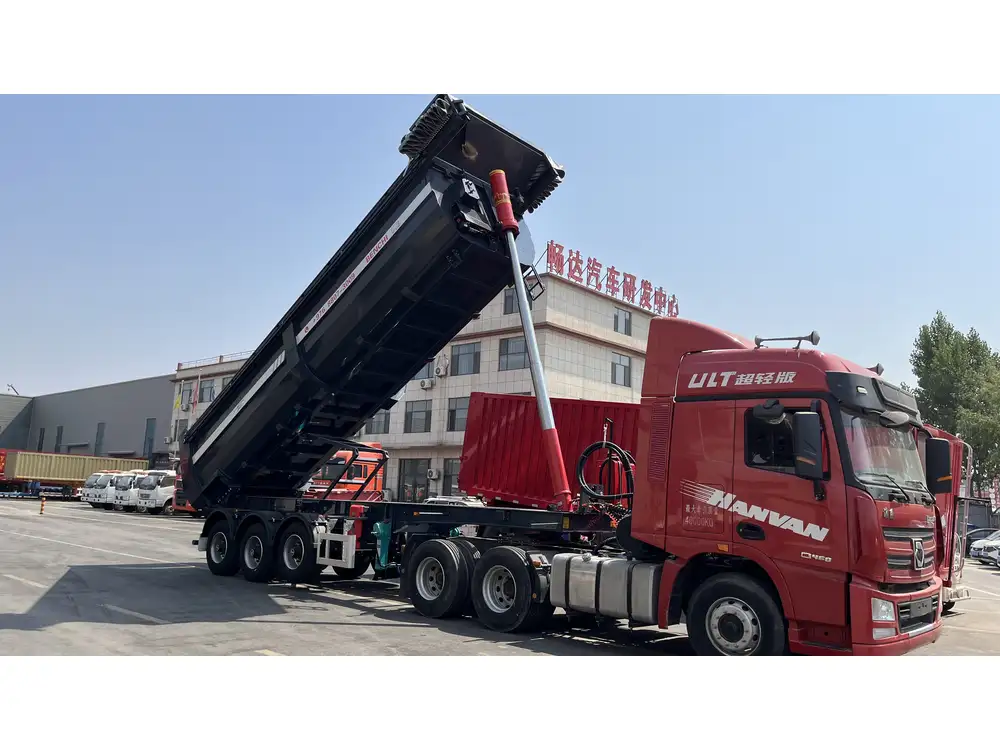The world of semi-trailers is vast and intricate, with various components working in unison to ensure optimal performance, stability, and safety. One of the most significant components of a semi-trailer is its axles. This article delves into the nuances of semi-trailer axles, addressing critical questions like, “How many axles does a semi-trailer have?” while exploring the implications for load capacity and operational efficiency.
What is a Semi-Trailer?
A semi-trailer is a specialized vehicle designed to be towed by a truck (commonly referred to as a semi-truck or tractor). Unlike full trailers, semi-trailers depend on their front section being coupled to a truck, allowing for a portion of the trailer to rest on the truck’s chassis. This configuration offers unique advantages in terms of maneuverability, weight distribution, and freight loading capabilities.
Key Components of a Semi-Trailer
- Chassis: The structural framework that supports the load.
- Axles: Essential for weight distribution and mobility.
- Suspension System: Absorbs shocks and maintains stability.
- Braking System: Ensures the safety of the vehicle.
- Load Body: The area intended for carrying cargo.

The Role of Axles in Semi-Trailers
Axles are crucial components that support the trailer’s load and ensure that it rolls smoothly over surfaces. They play a significant role in maintaining stability and controlling the weight distribution of the cargo.
Types of Axles
Single Axle:
- Description: A single axle configuration typically supports lighter loads and is best suited for smaller trailers.
- Load Capacity: Can carry approximately 10,000 to 20,000 pounds, depending on the specific design.
Tandem Axle:
- Description: Featuring two axles in close proximity, tandem axles are designed for larger trailers.
- Load Capacity: They can manage between 34,000 to 40,000 pounds, making them ideal for heavy-duty applications.
Tridem Axle:
- Description: Consisting of three axles, tridem axles are often used for extensive cargo, providing an excellent spread for weight distribution.
- Load Capacity: Capable of supporting up to 50,000 pounds or more, depending on the state regulations.
How Many Axles Does a Semi-Trailer Have?
The number of axles on a semi-trailer can vary widely depending on several factors, including the type of cargo being transported, the trailer design, and regulatory requirements. Here’s a breakdown:
- Standard Semi-Trailer: Most commonly comprises two axles, making it optimal for general freight.
- Heavy-Duty Trailers: May feature three or four axles to manage heavier loads, commonly used in industries such as construction and logistics.
- Specialty Trailers: Designed for unique cargo, these can have more than four axles.

Comparative Analysis of Axle Types
| Axle Type | Typical Number of Axles | Load Capacity (lbs) | Best Suited For |
|---|---|---|---|
| Single Axle | 1 | 10,000 – 20,000 | Light loads |
| Tandem Axle | 2 | 34,000 – 40,000 | Standard freight |
| Tridem Axle | 3 | 50,000+ | Heavy loads |
The Importance of Axle Configuration in Load Capacity
Understanding axle configuration is essential for load management. The configuration affects not only the load capacity but also the handling and stability of the semi-trailer during transit.
Load Distribution
Proper load distribution is critical in preventing axle overload, which can lead to tire blowouts, braking issues, and significantly impacts road safety. The weight carried by each axle should ideally not exceed its rated capacity.

Federal and State Regulations
Regulatory bodies impose limits on axle loads to ensure road safety and minimize wear on infrastructure. In the United States, the maximum weight per axle is usually 20,000 pounds for a single axle and 34,000 pounds for a tandem axle, with variations allowed based on state legislations.
Factors Influencing Axle Needs
- Type of Cargo: Different commodities have varying densities and weight distributions.
- Travel Routes: Roads with steep grades may require special axle configurations for stability.
- Trailer Design: The design of the trailer itself, including length and structure, greatly influences the appropriate axle configuration.
Maintenance of Semi-Trailer Axles
Maintaining the axles is crucial for ensuring the longevity and safety of the semi-trailer. Regular inspections and maintenance tasks should include:
- Visual Inspections: Check for signs of wear, rust, and damage.
- Lubrication: Ensure that moving parts, such as bearings, are adequately lubricated.
- Alignment Checks: Misalignment can lead to uneven wear on tires and axles.
- Replacement: Worn or damaged axles should be replaced immediately to prevent accidents.

Signs of Axle Problems
- Unusual sounds while towing (creaking or grinding).
- Excessive heat emanating from wheel bearings.
- Uneven tire wear patterns.
- Difficulty in maneuvering the trailer.
Enhancing Axle Performance Through Technology
Technological advancements in trailer design and construction have considerably enhanced axle performance. Here are some notable innovations:
Air Suspension Systems
Air suspension systems offer superior ride quality by automatically adjusting to the load. This technology helps in distributing the weight evenly across the axles, enhancing overall stability and reducing wear on tires.

Advanced Braking Systems
Modern braking systems, including anti-lock braking systems (ABS) and electronic braking systems (EBS), improve braking performance significantly. This is particularly useful for trailers with more complex axle configurations.
Conclusion
Understanding the number of axles in semi-trailers and their significance is essential for manufacturers, operators, and logistics managers alike. Proper axle configuration not only determines load capacity but also impacts safety and efficiency on the road. Regular maintenance, informed choices on axle types, and leveraging technology will ensure optimal performance of semi-trailers.
By leveraging this in-depth knowledge of semi-trailer axles, operators can make informed decisions that enhance productivity and safety, ultimately contributing to an effective and responsibly managed logistics operation.



